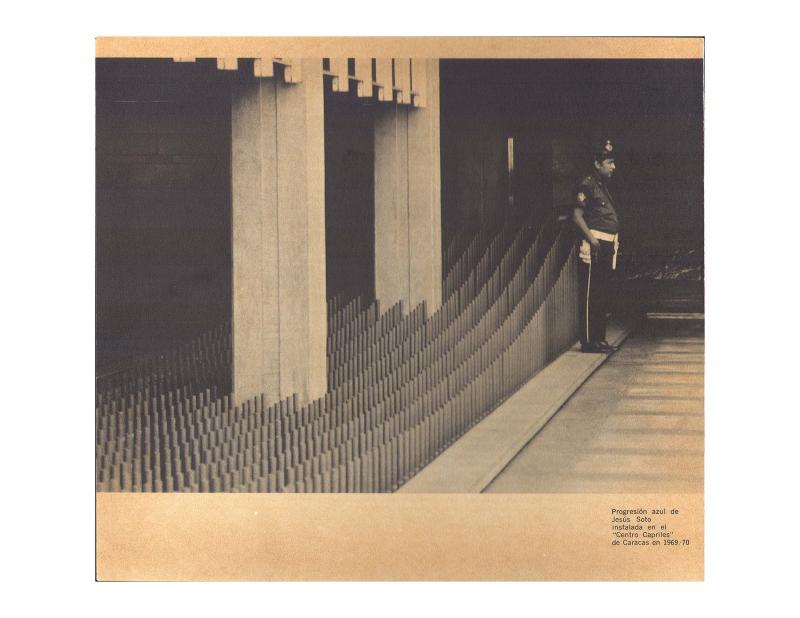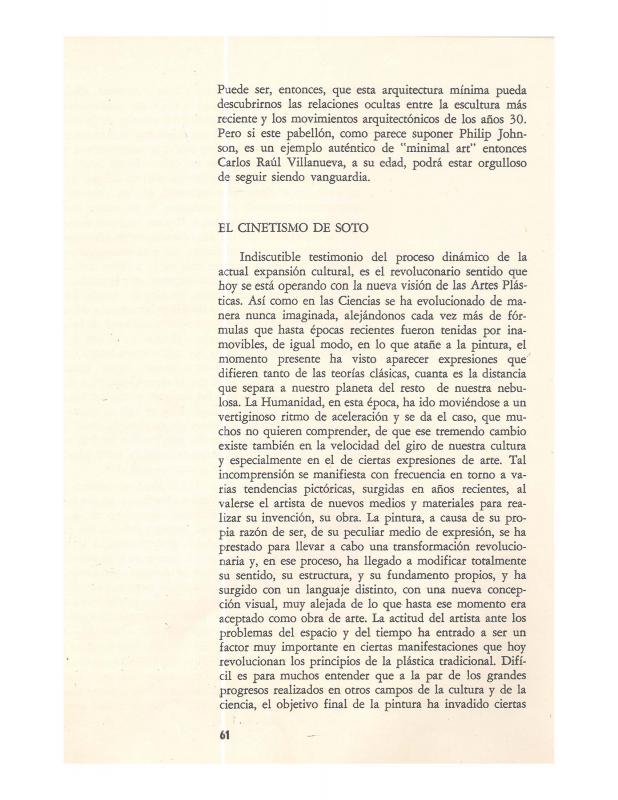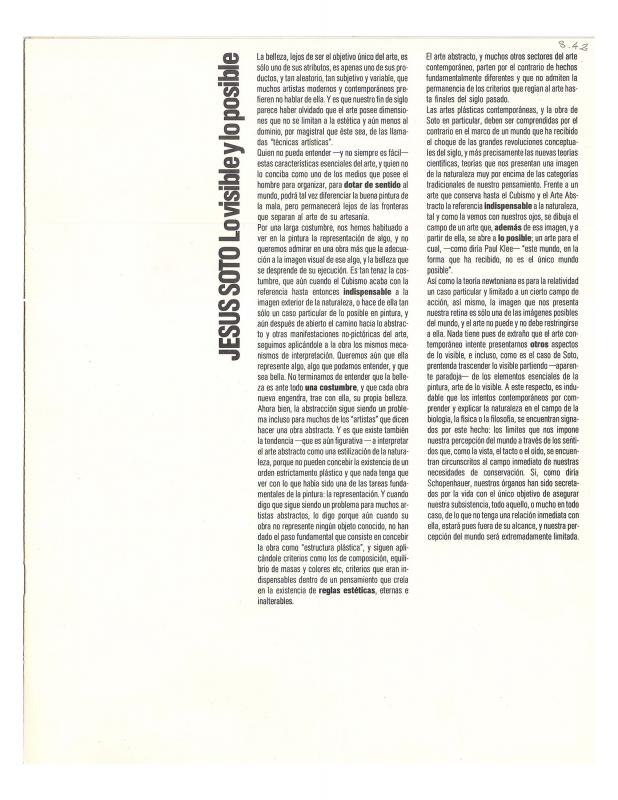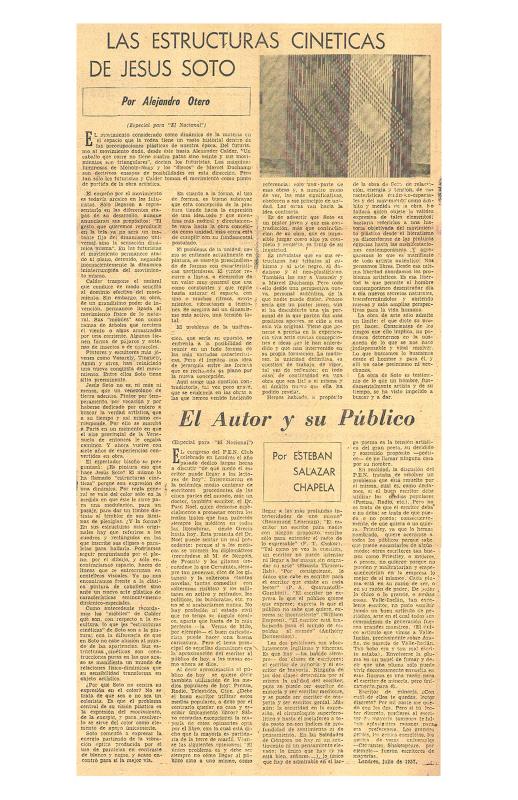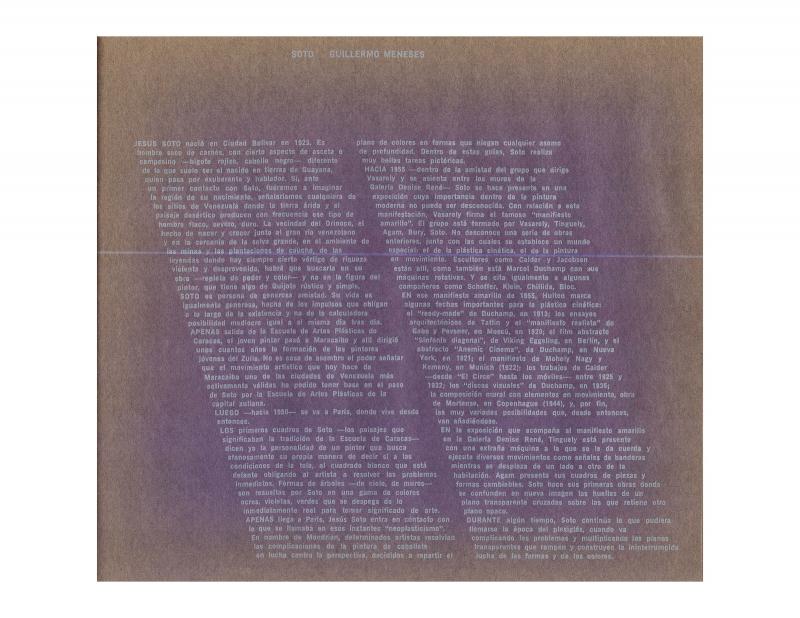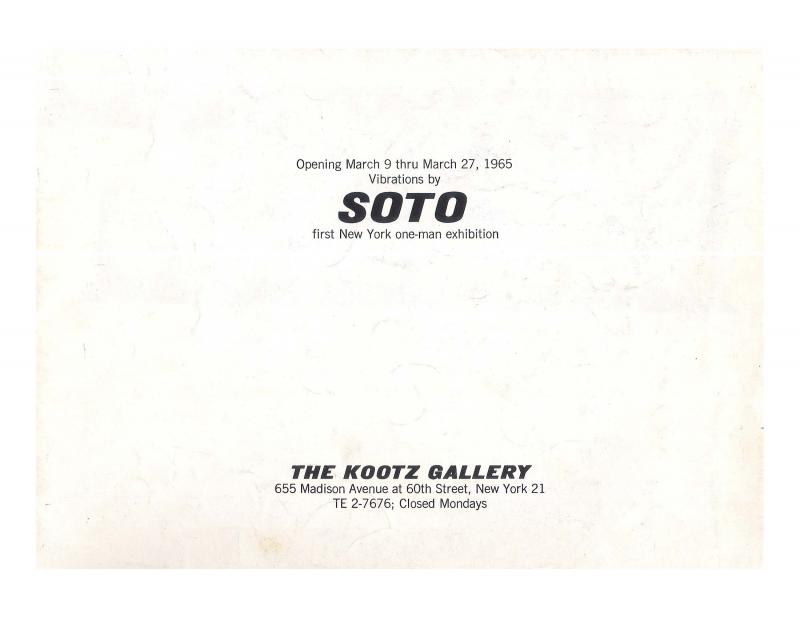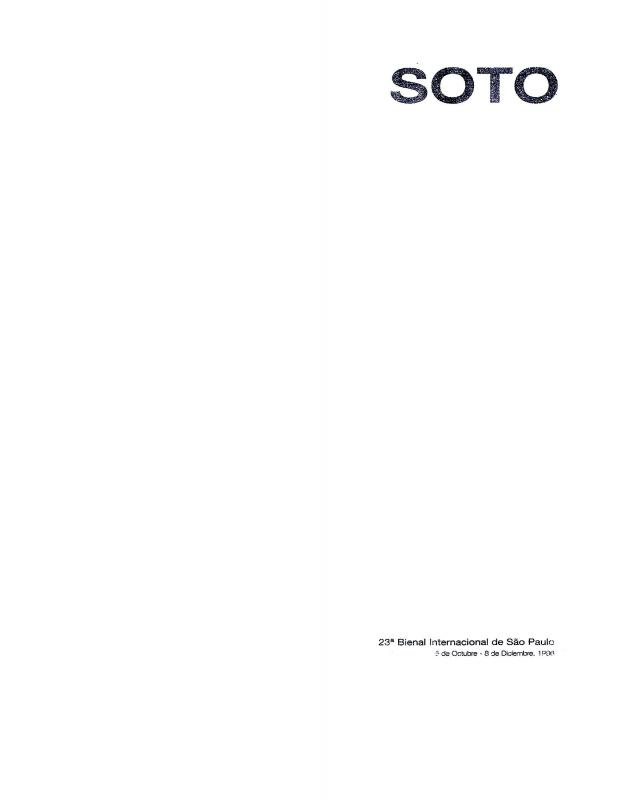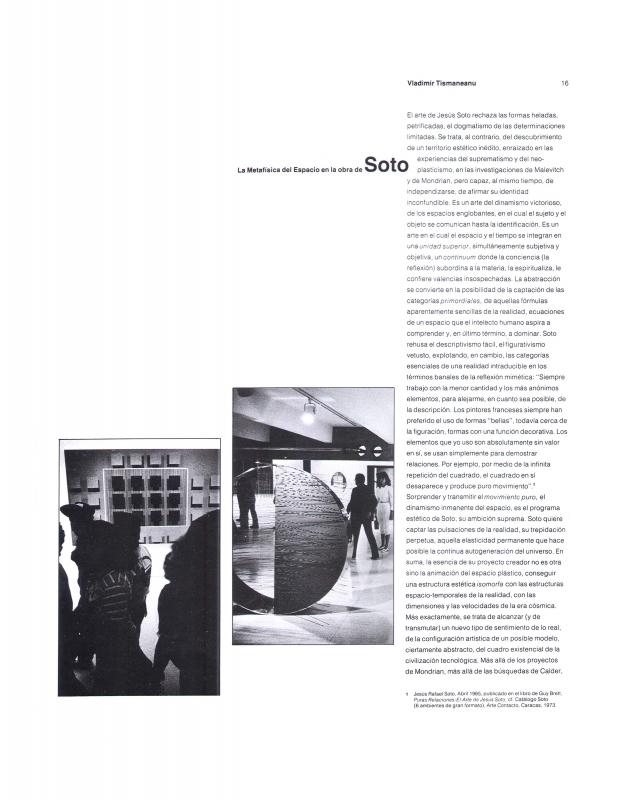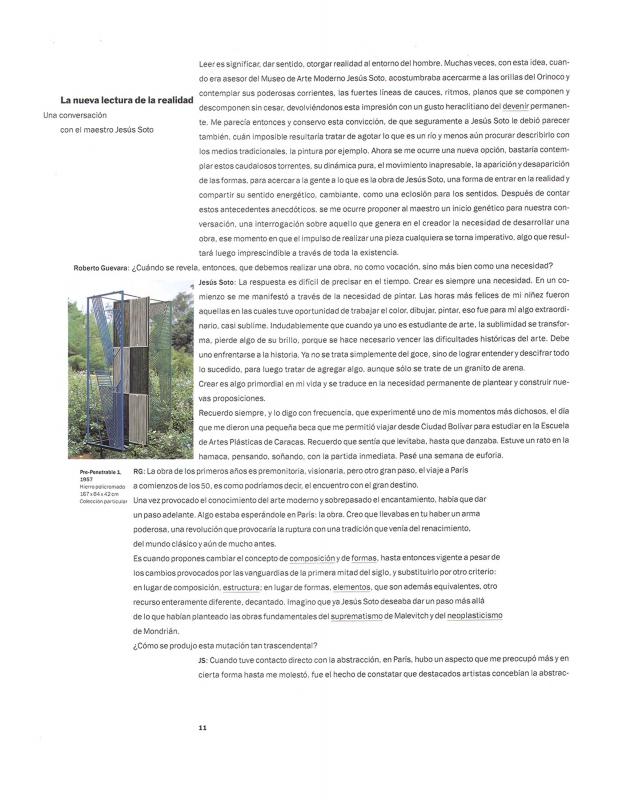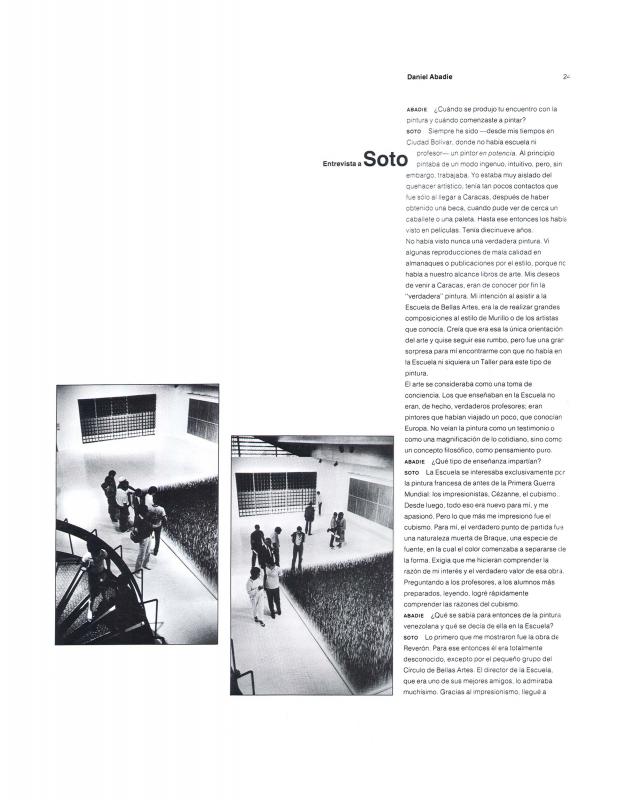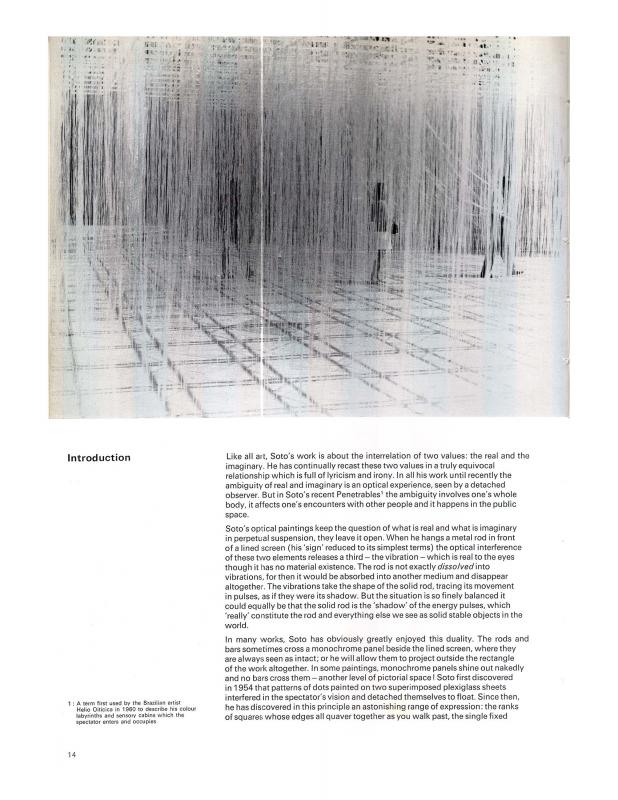This essay by the Venezuelan painter, writer, and doctor Carlos Contramaestre (1933–96), a founding member of the El Techo de la Ballena group, appeared in the catalogue for Aventuras de la Óptica, the joint exhibition of works by the Venezuelan visual artists Jesús Rafael Soto (1923–2005) and Carlos Cruz-Diez (b. 1923), in Granada, Spain. Seven years had passed since Soto’s first exhibition in Spain, and he was now acknowledged by Spanish critics as a maestro of Kinetic Art and modern Abstract art in general. Venezuelan writers produced the articles for this catalogue, and Contramaestre was assigned to write about Soto. His essay focuses on the 1950s and 1960s, when the two artists were still experimenting with different techniques and materials. In Contramaestre’s opinion, one of the great landmarks in Soto’s career occurred after he had studied the work of Duchamp and Gabo and decided against using any kind of motorized mechanism in his work. Soto prefers to use visual elements that produce movement and vibration, and this leads to one of the defining traits of his work, which is the involvement of the viewer and the viewer’s perception in his project. At several points in the essay, Contramaestre quotes Soto’s words and comments by the well-known critics Alfredo Boulton and Juan Calzadilla. It is odd that an artist endowed with Contramaestre’s convictions should limit himself to providing general information about Soto and his work that, at the time it was published, added nothing that had not already been said by the sources mentioned above.
[To view other articles about Soto, please see the following material in the ICAA digital archive: by Alfredo Boulton “Jesús Soto 1971” (doc. no. 1059661) and “El cinetismo de Soto” (doc. no. 1069749); the essay by Ariel Jiménez “Jesús Soto: Lo visible y lo posible” (doc. no. 1073684); the article by Alejandro Otero “Las Estructuras cinéticas de Jesús Soto” (doc. no. 850667); by Guillermo Meneses, both “Soto” (doc. no. 1080690) and “Soto: Estructuras cinéticas” (doc. no. 1059619) and the essay “Sin título” [Text in the catalogue Vibrations by Soto, The Kootz Gallery 1965] (doc. no. 1069781); the article by Roberto Guevara “La energía como realidad” (doc. no. 1102332); by Vladimir Tismaneanu “La metafísica del espacio en la obra de Soto” (doc. no. 1101524); the interview, also by Guevara “La nueva lectura de la realidad: Una conversación con el maestro Jesús Soto” (doc. no. 1059731); by Daniel Abadie “Entrevista a Soto” (doc. no. 1101540); and the introduction to Soto, the 1969 exhibition at the Marlborough-Gerson Gallery, written by Guy Brett (doc. no. 1073457)].

